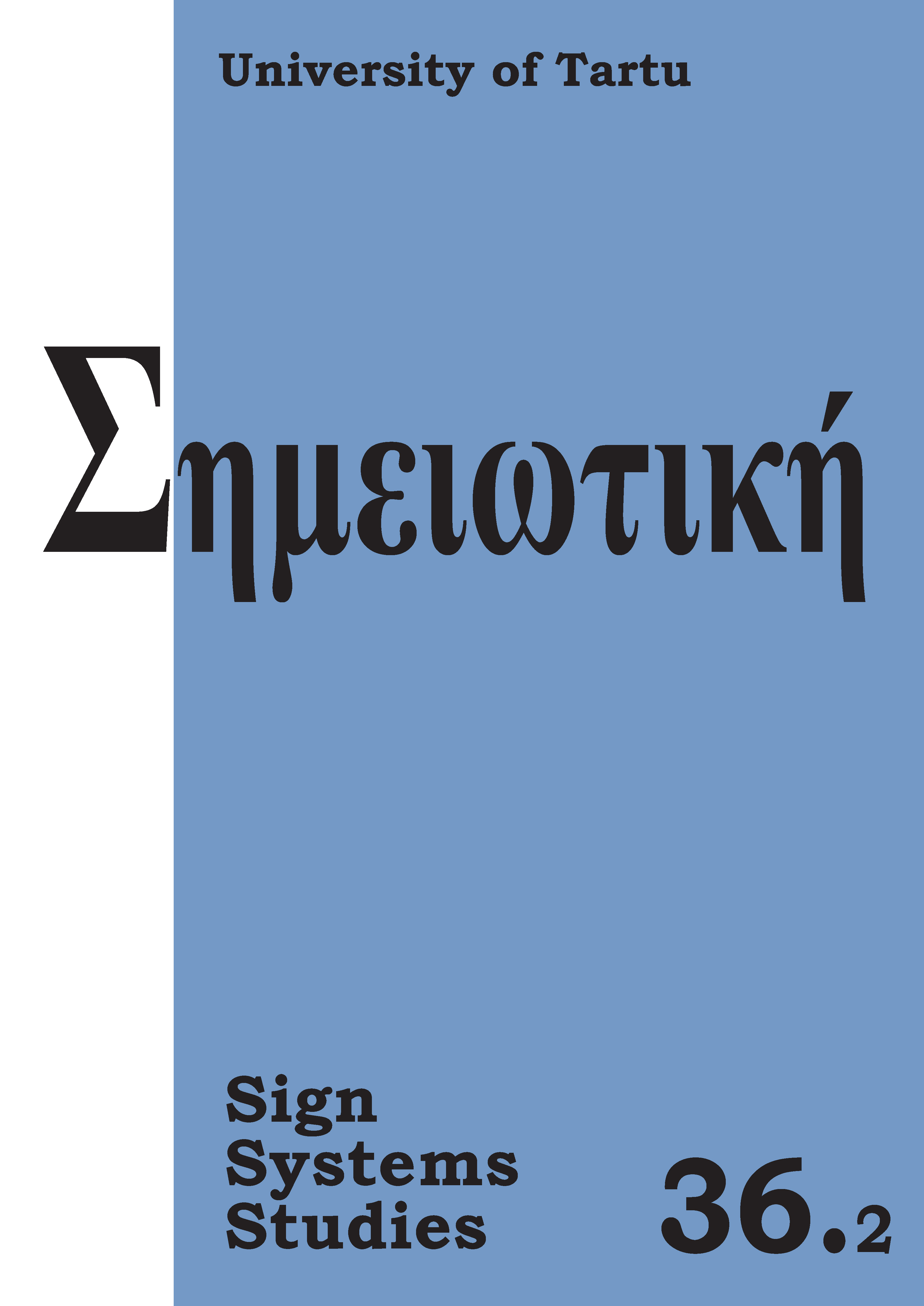From semiosis to semioethics: The full vista of the action of signs
DOI:
https://doi.org/10.12697/SSS.2008.36.2.09Abstract
How anything acts depends upon what it is, both as a kind of thing and as a distinct individual of that kind: “agere sequitur esse” — action follows being. This is as true of signs as it is of lions or centipedes: therefore, in order to determine the range or extent of semiosis we need above all to determine the kind of being at stake under the name “sign”. Since Poinsot, in a thesis that the work of Peirce centuries later confirmed, the proper being of signs as signs lies in a relation, a relationship irreducibly unifying three distinct terms: a foreground term representing another than itself — the representamen or sign vehicle; the other represented — the significate or object signified; and the third term to or for whom the other-representation is made — the interpretant, which need not be a person and, indeed, need not even be mental. The action of signs then is the way signs influence the world, including the world of experience and knowledge, but extending even to the physical world of nature beyond the living. It is a question of what is the causality proper to signs in consequence of the being proper to them as signs, an indirect causality, just as relations are indirectly dependent upon the interactions of individuals making up the plurality of the universe; and a causality that models what could or might be in contrast to what is here and now. To associate this causality with final causality is correct insofar as signs are employed in shaping the interactions of individual things; but to equate this causality with “teleology” is a fundamental error into which the contemporary development of semiotics has been inclined to fall, largely through some published passages of Peirce from an essay within which he corrects this error but in passages so far left unpublished. By bringing these passages to light, in which Peirce points exactly in the direction earlier indicated by Poinsot, this essay attempts a kind of survey of the contemporary semiotic development in which the full vista of semiosis is laid out, and shown to be co-extensive with the boundaries of the universe itself, wherever they might fall. Precisely the indirect extrinsically specificative formal causality that signs exercise is what enables the “influence of the future” according to which semiosis changes the relevance of past to present in the interactions of Secondness. Understanding of this point (the causality proper to signs) also manifests the error of reducing the universe to signs, the error sometimes called “pansemiosis”.


